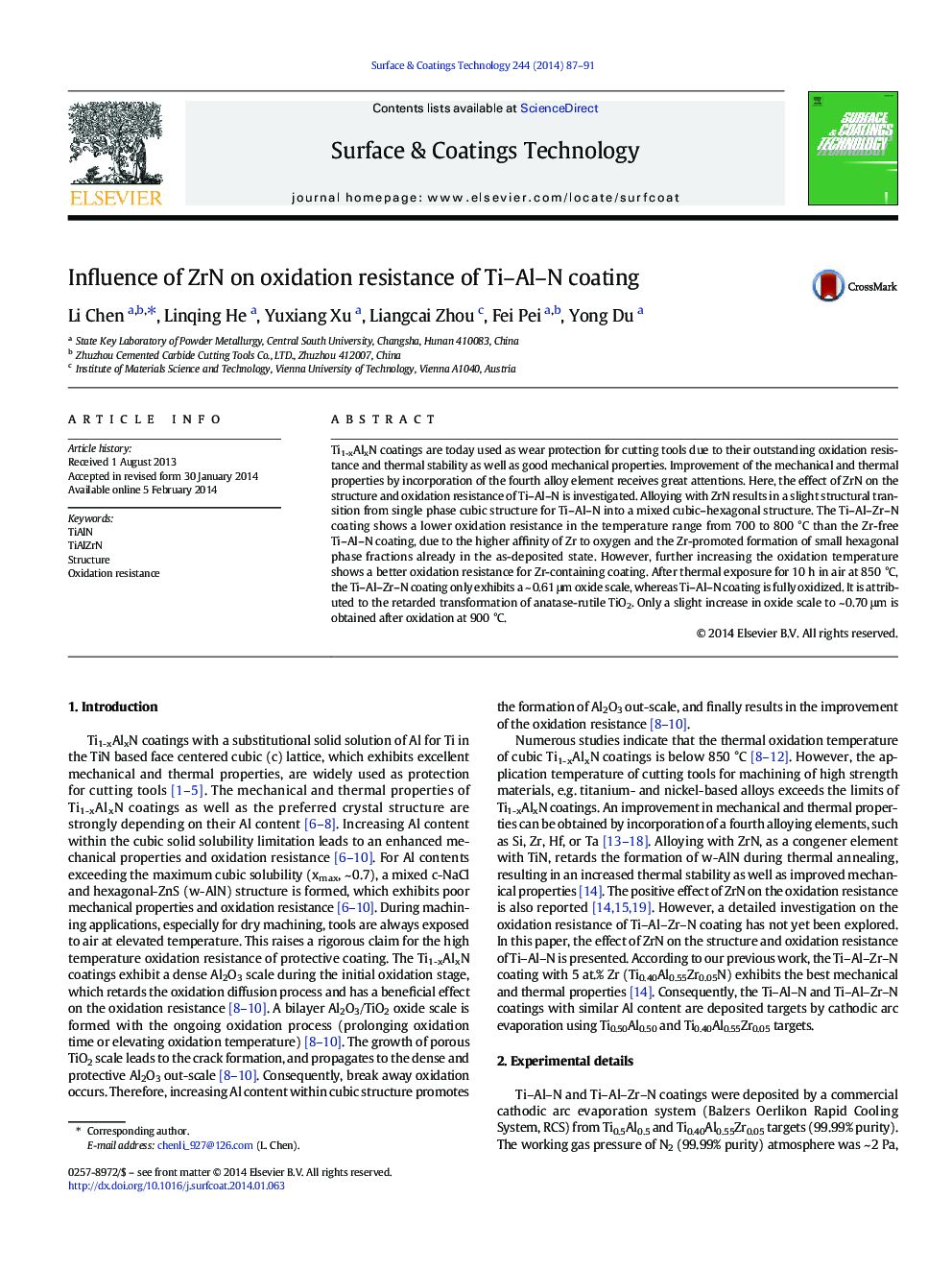| Article ID | Journal | Published Year | Pages | File Type |
|---|---|---|---|---|
| 8028006 | Surface and Coatings Technology | 2014 | 5 Pages |
Abstract
Ti1-xAlxN coatings are today used as wear protection for cutting tools due to their outstanding oxidation resistance and thermal stability as well as good mechanical properties. Improvement of the mechanical and thermal properties by incorporation of the fourth alloy element receives great attentions. Here, the effect of ZrN on the structure and oxidation resistance of Ti-Al-N is investigated. Alloying with ZrN results in a slight structural transition from single phase cubic structure for Ti-Al-N into a mixed cubic-hexagonal structure. The Ti-Al-Zr-N coating shows a lower oxidation resistance in the temperature range from 700 to 800 °C than the Zr-free Ti-Al-N coating, due to the higher affinity of Zr to oxygen and the Zr-promoted formation of small hexagonal phase fractions already in the as-deposited state. However, further increasing the oxidation temperature shows a better oxidation resistance for Zr-containing coating. After thermal exposure for 10 h in air at 850 °C, the Ti-Al-Zr-N coating only exhibits a ~ 0.61 μm oxide scale, whereas Ti-Al-N coating is fully oxidized. It is attributed to the retarded transformation of anatase-rutile TiO2. Only a slight increase in oxide scale to ~ 0.70 μm is obtained after oxidation at 900 °C.
Keywords
Related Topics
Physical Sciences and Engineering
Materials Science
Nanotechnology
Authors
Li Chen, Linqing He, Yuxiang Xu, Liangcai Zhou, Fei Pei, Yong Du,
